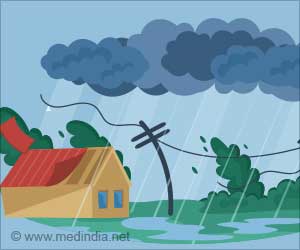The number of major Atlantic hurricanes per year may almost double by the end of the century in response to global warming, a new study has found.
The number of major Atlantic hurricanes per year may almost double by the end of the century in response to global warming, a new study has found.
In 2008, a group led by Thomas Knutson of the National Oceanic and Atmospheric Administration (NOAA) Geophysical Fluid Dynamics Laboratory (GFDL) in Princeton, New Jersey, projected a marked reduction in the overall number of tropical storms and hurricanes in the western North Atlantic Ocean.That result, based on a simulation of Atlantic hurricane activity in a warming world, came as a surprise.
Seeking an explanation, the team hypothesized that the western Atlantic Ocean might become less favourable for storms if rising sea surface temperatures further south attract storms from the Gulf of Mexico and adjacent regions.
However, at a resolution of about 18 kilometres, the models that the team used for their initial simulation were too coarse to resolve individual storm systems.
When they repeated their efforts with a model with much higher resolution, the scientists found a shift in the distribution of storms.
According to a report in Nature News, the finer-grained simulation confirmed the decline in the overall number of storms, but it also showed an 80 percent increase in the frequency of the most intense storms - Category 4 (210-249 kilometres per hour) and Category 5 (faster than 250 kilometres per hour).
Advertisement
They then zoomed in on any storms, generating a more detailed picture of them with a hurricane model used by NOAA's National Weather Service, and observed their behaviour over five simulated days.
"We think that increased vertical wind shear in a warmer climate will prevent many storms from growing to hurricane force. But in small sub-regions of the Atlantic the effect may not come to bear, and storms tracking across those spots are likely to get more intense," he added.
The projection that there will be fewer but more intense Atlantic hurricanes is in agreement with results of other groups that have used high-resolution climate models to study hurricane activity.
Source-ANI
RAS









